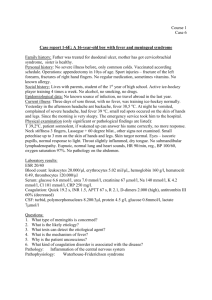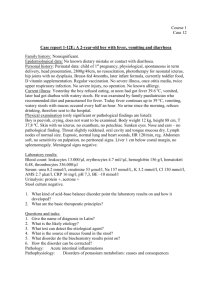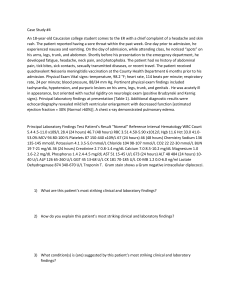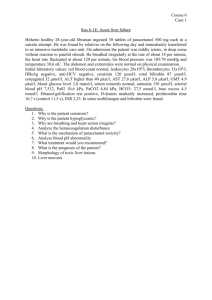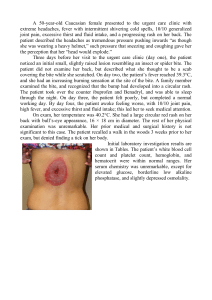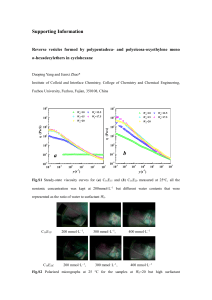Fever – case study No 8:
advertisement
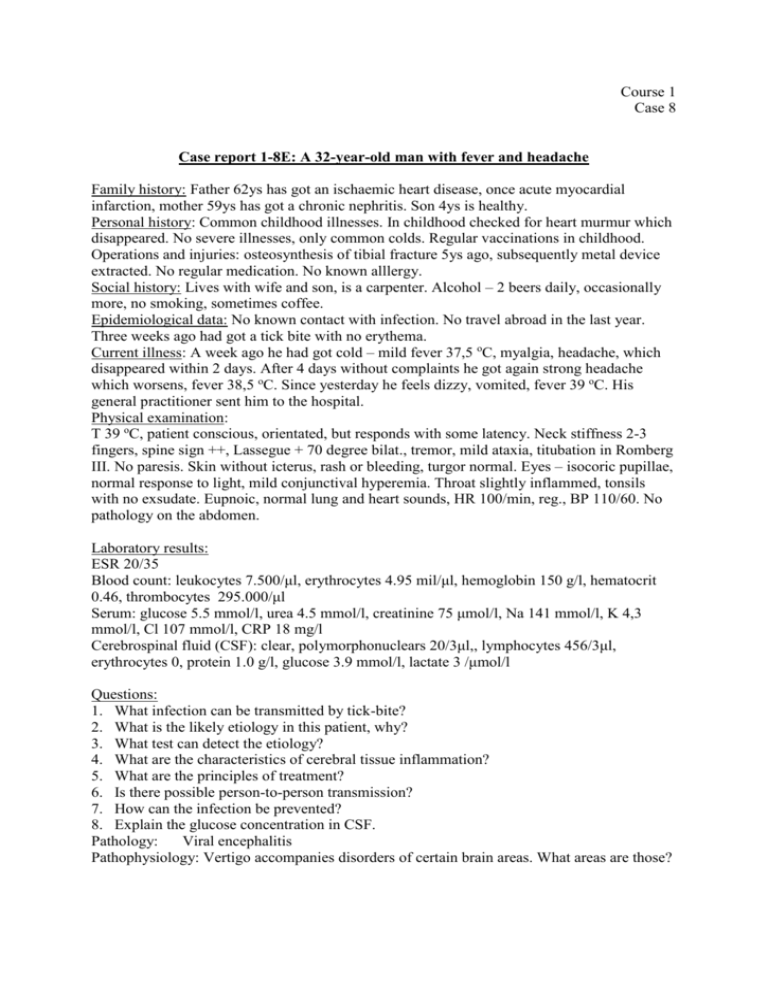
Course 1 Case 8 Case report 1-8E: A 32-year-old man with fever and headache Family history: Father 62ys has got an ischaemic heart disease, once acute myocardial infarction, mother 59ys has got a chronic nephritis. Son 4ys is healthy. Personal history: Common childhood illnesses. In childhood checked for heart murmur which disappeared. No severe illnesses, only common colds. Regular vaccinations in childhood. Operations and injuries: osteosynthesis of tibial fracture 5ys ago, subsequently metal device extracted. No regular medication. No known alllergy. Social history: Lives with wife and son, is a carpenter. Alcohol – 2 beers daily, occasionally more, no smoking, sometimes coffee. Epidemiological data: No known contact with infection. No travel abroad in the last year. Three weeks ago had got a tick bite with no erythema. Current illness: A week ago he had got cold – mild fever 37,5 oC, myalgia, headache, which disappeared within 2 days. After 4 days without complaints he got again strong headache which worsens, fever 38,5 oC. Since yesterday he feels dizzy, vomited, fever 39 oC. His general practitioner sent him to the hospital. Physical examination: T 39 oC, patient conscious, orientated, but responds with some latency. Neck stiffness 2-3 fingers, spine sign ++, Lassegue + 70 degree bilat., tremor, mild ataxia, titubation in Romberg III. No paresis. Skin without icterus, rash or bleeding, turgor normal. Eyes – isocoric pupillae, normal response to light, mild conjunctival hyperemia. Throat slightly inflammed, tonsils with no exsudate. Eupnoic, normal lung and heart sounds, HR 100/min, reg., BP 110/60. No pathology on the abdomen. Laboratory results: ESR 20/35 Blood count: leukocytes 7.500/μl, erythrocytes 4.95 mil/μl, hemoglobin 150 g/l, hematocrit 0.46, thrombocytes 295.000/μl Serum: glucose 5.5 mmol/l, urea 4.5 mmol/l, creatinine 75 μmol/l, Na 141 mmol/l, K 4,3 mmol/l, Cl 107 mmol/l, CRP 18 mg/l Cerebrospinal fluid (CSF): clear, polymorphonuclears 20/3μl,, lymphocytes 456/3μl, erythrocytes 0, protein 1.0 g/l, glucose 3.9 mmol/l, lactate 3 /μmol/l Questions: 1. What infection can be transmitted by tick-bite? 2. What is the likely etiology in this patient, why? 3. What test can detect the etiology? 4. What are the characteristics of cerebral tissue inflammation? 5. What are the principles of treatment? 6. Is there possible person-to-person transmission? 7. How can the infection be prevented? 8. Explain the glucose concentration in CSF. Pathology: Viral encephalitis Pathophysiology: Vertigo accompanies disorders of certain brain areas. What areas are those?
